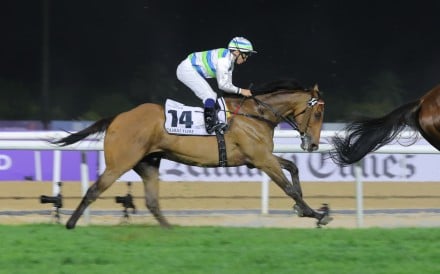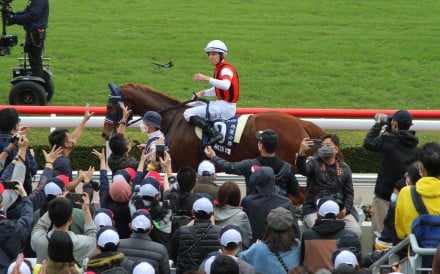Sometimes a bit of research takes us down a path that leads to something good and sometimes it’s just time tossed down the drain.
Horse players, and particularly sports bettors, have become increasingly obsessed with data mining for the winning edge. You know the kind of thing – Arsenal has never lost after scoring first in the eleventh minute of an away game with a left footed player. That kind of stuff. Can do your head in, frankly, but if it works, it must work.
Trainer Ricky Yiu Poon-fai threw out the teaser on Sunday, after reserve Happy Agility’s win, that promoted reserves (runners which only get a start when there’s a withdrawal from the declared runners) have a much better winning record than they should have and that here was a statistic worth investigating.
Of course, this bit of popular wisdom surfaces – usually attached to the flotation device of a mild conspiracy theory surrounding why the scratched horse was even scratched to allow the reserve a run – whenever promoted reserves do actually win. When they lose, nobody says anything and the sun still comes up in the east.
But, just for the sheer hell of it – and despite the little voice in the distance saying don’t do it – we thought we’d wander into this blind alley and take a look at the idea.
Well, on the surface, this was a waste of time. Looking at the whole of last season plus what there’s been of this one – yes, smallish sample of 115 but even that was time-consuming – we found that only 11 reserves had won. If you flat bet them, you lost just a tick over 20 per cent of your outlay, so not far removed from any kind of random selection method like lucky names or lucky numbers.
We even realised pretty quickly why Ricky Yiu thought there was something to it – he’s had six promoted reserves in that time and three won, including Happy Agility twice now.
So, thanks a lot Ricky. Or at least that’s what we were thinking until we delved deeper.
Throw out the very long odds rubbish not expected to run any sort of race and, for promoted reserves under 21.0, the picture improved to actually become a profitable bet.
Then we carved them back further to only those reserves expected to be competitive, those who started under 11.0, and suddenly it was jingle bells. In that period, this group numbered 24 bets for eight winners and a whopping 94 per cent profit on your flat stake outlay – hard to get with a pick and shovel, and at least a situation that might invite a look at a much bigger sample.
It doesn’t matter if it’s turf or dirt, champion trainer John Size keeps getting winners
And then there was the other proposition that we set ourselves after John Size won both dirt races with a first-time dirt runner.
Last season, we got a bit of a surprise, after examining who the superior strike rate trainers were on the three tracks, to find that Size is the best dirt trainer in town over a number of years.
That hadn’t seemed obvious but we’d always had a niggling suspicion that he was pretty good at getting a result first time on the dirt with horses, so that double drove us to investigate whether there was a dollar in it.
This time, we have a much bigger sample, using Size runners back to the start of the 2004-05 season. Why? Well, because those we have on a data base, the promoted reserves took some sweat.
Size has 467 runners on dirt in that time, for 72 wins and a loss of 8.65 per cent of your outlay for a flat bet – very presentable considering the 17.5 per cent take from the pool but not something you can take to the bank.
Pare that to the first time dirt horses and he’s had 133 of those for 14 wins and your bottom line gets much worse, losing over 20 per cent now. Another seven horses won at their second dirt run and another eight at their third. So within three starts on the all-weather, Size had won with 29 of the 133 individuals, which seems pretty decent strike rate but hard to make profitable now that your bets have ballooned to 399 and the return from every dirt winner Size ever had in any scenario is not much more than you’d outlay on those.
If we undertake the same process as the reserves and only consider Size’s first time dirt runners at less than 21.0, there is a tiny profit on outlay but when we go the next step and use those less than 11.0, we’re actually back to losing 15 per cent.
So the lesson – other than the message to not trust data to back up your vague gut feeling – is that Size is a better than average random bet on the dirt but there’s no magic to the first timers.
But those promoted reserves the market likes are dynamite – maybe there really is a conspiracy.
Lack of protest surprising amid dodgem derby
Amidst the dodgem derby that was the final 400m of the first race on Sunday, perhaps it was easy to miss that there should have been a protest in the race – and quite arguably a successful one.
Stewards again went to town on careless riding on the day – and we thought at least one of the four sidelined jockeys might be counting himself unlucky – but the case involving Alex Lai Hoi-wing at the top of the straight in race one might not have been given its correct weight.
The stipes reported that Lai, on Daring Heart, was found guilty of careless riding for the incident at the 400m where he had shifted out, caused Generous Heart to check and clip Daring Heart’s heels and blunder, and the video shows he was a bit fortunate not to come down.
At that stage, and obviously, since he clipped Daring Heart’s heels, Generous Heart was no better than a length behind Daring Heart but, after the incident, was probably two lengths behind him.
Eventually, they finished third and fourth, with Daring Heart only a half length to the good of Generous Heart.
You could argue whether an objection by the fourth horse against the third placegetter – with significant impact on dividends in the race – should have been upheld or thrown out, but it was surprising that nobody thought to put one in.






















